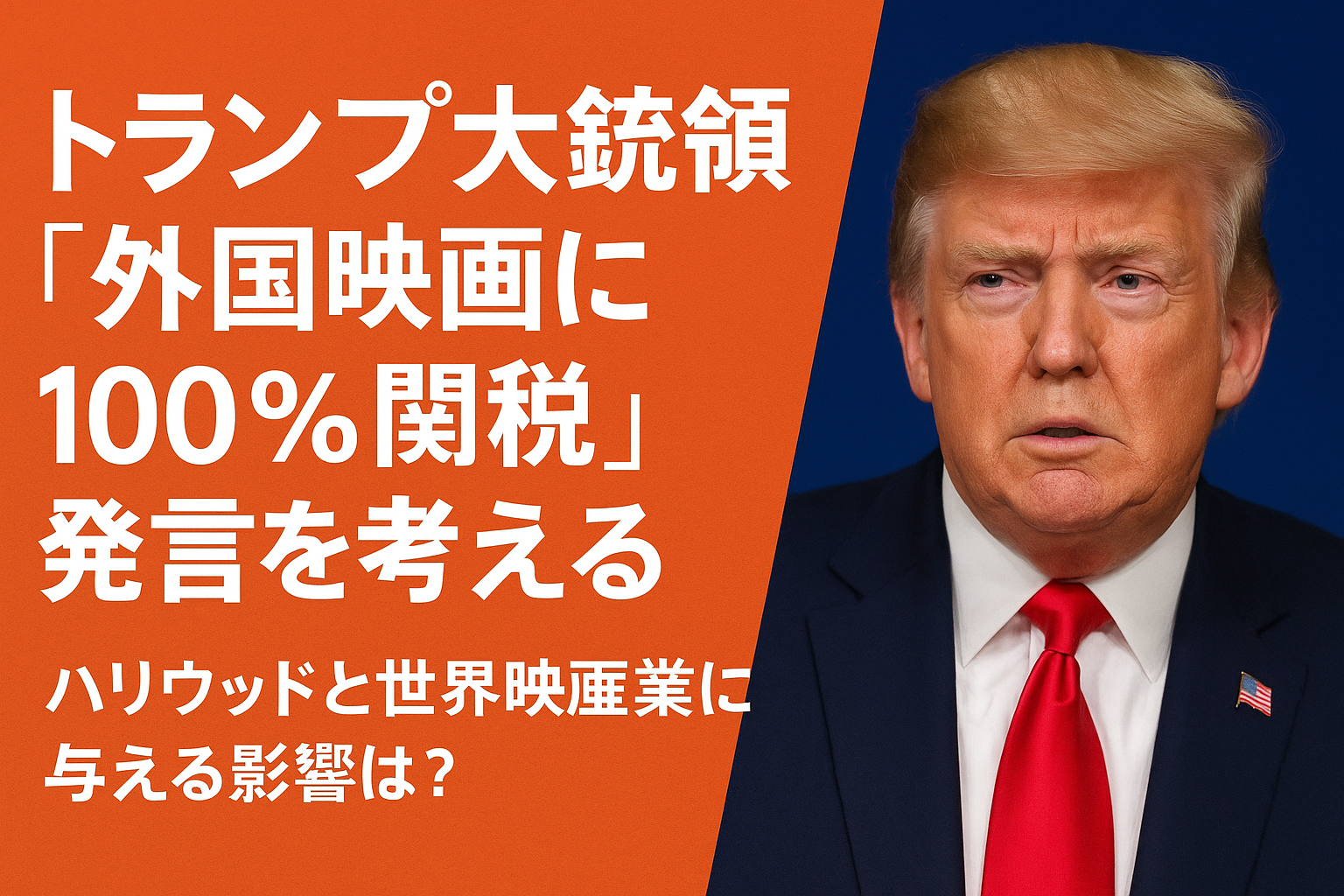On September 29, U.S. President Trump once again declared on his social media that he would “impose a 100% tariff on films produced outside the United States.” Since films are generally classified not as “goods” but as intellectual property or services, the specific method of applying tariffs remains unclear. Nevertheless, this statement has sent shockwaves through Hollywood and the global film industry.
Background and Political Intent
Trump argued that “the American film industry has been stolen by other countries,” and singled out California Governor Gavin Newsom for criticism. This can be read not merely as an issue of protecting the film industry, but also as a political attack on California, a Democratic stronghold. He made similar remarks in May, and by repeating this claim, he may be aiming to appeal to his political base.
Practical Difficulties
The idea of imposing “tariffs” on films poses major problems. A completed film is not distributed primarily through physical media such as DVDs or Blu-ray discs, but rather as “content” via streaming platforms and theatrical releases. To apply tariffs in this context, a system of taxation on the trading of import distribution rights or streaming rights would be necessary, but designing such a system would be highly complex.
Impact on the Industry
Many Hollywood films are shot overseas to reduce costs. If tariffs were implemented, production costs would skyrocket, ultimately increasing the burden on U.S. film companies themselves. Furthermore, there is the risk of retaliatory trade frictions in international markets, which could weaken the global presence of American films.
Risks to International Cultural Exchange
Films are not only trade commodities but also a form of “shared culture.” If a precedent is set by imposing high tariffs on American films, it could give other countries an excuse to protect their own cultures through similar measures, potentially hindering the free exchange of films and audiovisual content. Considering the value of stories and entertainment that resonate across borders, this could amount to a cultural loss.
Conclusion
It remains unclear whether this statement will actually materialize into policy or if it is merely political performance. However, the notion of “protecting films through tariffs” does not fit with today’s globally integrated film industry and may even backfire. If the goal is to support the cultural sector, more realistic approaches might include strengthening domestic production bases, supporting creators, and fostering international collaboration.

